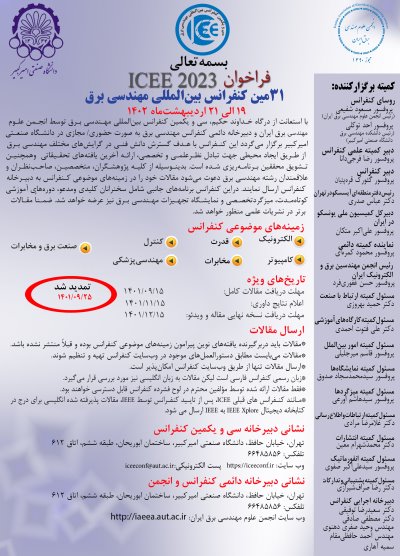0% Complete

نویسندگان :
کلمات کلیدی :
چکیده :
لیست مقالات بایگانی شده
نیلوفر پورقادری - محمود فتوحی فیروز آباد - معین معینی اقطاعی - میلاد کبیری فر
Arvin Esfandiari - Ali Doustmohammadi
Seyed Hamed Mir Mohammad Ali Roudaki - Mehrdad Abedi - Iraj Pourkeivani
Masood Soleimanifard - Ali Yazdian Varjani
Rozita Shafie - AliAkbar Tadaion - Zolfa Zeinalpour-Yazdi
Sahar Askari - Somayeh Afrasiabi
Mohammadreza Sheykh - Heidar Ali ُTalebi - Iman Sharifi
پیمان افضلی - مسعود رشیدی نژاد - امیر عبداللهی - محمدرضا صالحی زاده - حسین فرهمند
Faezeh Rahimi - Mohammad Sedghi - Asghar Gholami
Masoud Shafiee - Kamyar Azarakhsh





